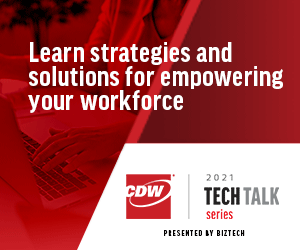As an IT team of one handling the needs of both staff and students, Perez also needed something that was easy to configure.
“My biggest challenge was to be as efficient with my time as possible. The less I have to touch a device, the more effective I am,” he says. “From an IT perspective, you get a lot of granular control through the Google Admin console, and you can manage all the devices through the cloud.”
Tech Helps Nonprofits Enable Remote Engagement
The Boys & Girls Clubs of the Coastal Plain is hardly alone. Research from NTEN, which helps nonprofits fulfill their missions through technology, found that close to 70 percent of nonprofit organizations invested in technology systems and tools to continue operations as the pandemic took hold.
“At first, we saw a huge push to get Zoom because it was widely promoted for free for nonprofits, but many organizations soon realized they didn’t have a plan for what they needed Zoom for, necessarily,” says Amy Sample Ward, CEO of NTEN. “What’s more important is being able to use technology as a resource, and to think first about how you’re going to use it to engage, to provide services or to change public policy.”
That’s what The Contingent, based in Portland, Ore., is doing with its innovative online portal for connecting community needs with individuals and businesses that can fulfill them. The portal was built in a single day in response to the pandemic.
MORE FROM BIZTECH: How nonprofits should be using automation.
“I woke up in the middle of the night,” on March 19, 2020, recalls Ben Sand, CEO of The Contingent. “The next day, we got five leaders in a room. Within five hours we had built My NeighbOR.”
The Contingent invests in innovative nonprofit ideas that empower leaders of color, mobilize community members, and support young people and families. Built on Microsoft Dynamics 365, My NeighbOR has gone through several iterations to expand its reach and become almost entirely automated.
“Version one was terrible,” says Peter Kim, director of technology, data and evaluation at The Contingent. “It worked, but it required a ton of man hours. Now, we’re running version five at one-tenth the amount of human involvement. That happened over the course of a year.”
Times of Crisis Can Foster Innovation
My NeighbOR was originally designed to match the needs of foster care families with donations from community members. Today, it can be replicated to serve other programs in Oregon, and perhaps even nationwide. My NeighbOR has served thousands of people in the state without direct contact from anyone at The Contingent.
“What’s unique is that it’s a system running on technology, holding inventory information in a customer relationship management tool while also creating communication with constituents,” says Sand. “It feels like a hug with everyone involved, but we don’t have to staff it. It’s a glimpse at how we can mobilize community assets in the future.”
REGISTER: Learn how nonprofits can enable their workers in the weekly CDW Tech Talk series. Click the link below to register.













